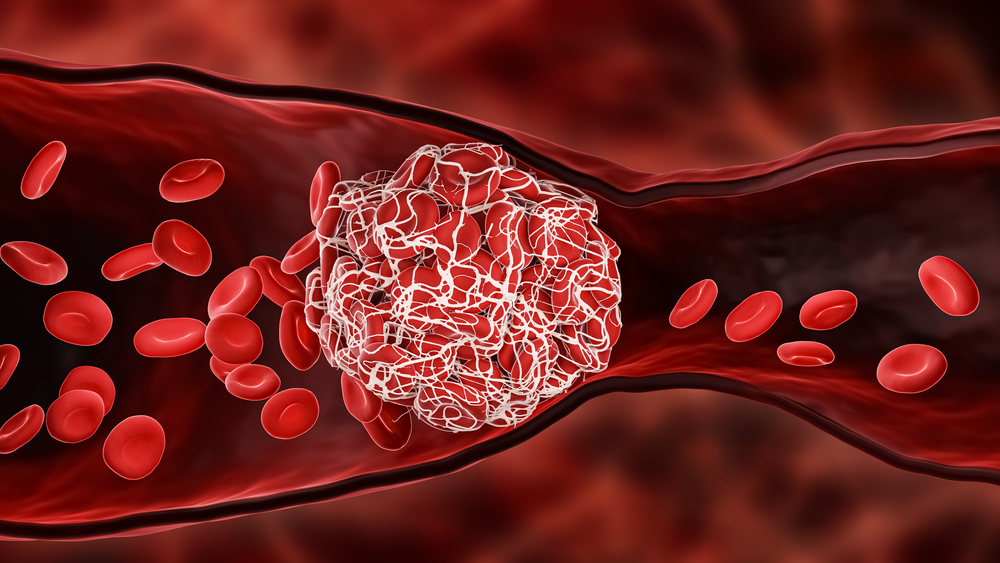
Summary
How clots are formed
D-dimer is part of one of the proteins found in your blood when a blood clot is dissolved. It is normally undetectable and only seen when a clot is breaking down.
Clotting is a normal part of healing. When you have an injury and it starts to bleed, your body triggers a sequence of clotting steps to create a blood clot to plug the hole. To do this, threads of a protein called fibrin are made.
These threads are glued together to form a fibrin net that catches platelets and helps hold the blood clot together. Platelets are tiny plate-shaped cells that circulate in your blood. They transform in shape and become very sticky and bind together to form clots.
Once a clot is formed, other substances are activated to slow the clotting process. They eventually begin to dissolve the clot so that it is removed when the injury is healed.
The clot breaks down into small pieces so that it can be disposed of. The fragments of the fibrin in the clot are called fibrin degradation products (FDP). One of these FDPs is D-dimer.
Why get tested?
D-dimer is especially useful when your medical team thinks that something other than a major blood clot is causing your symptoms. It is a quick, non-invasive test used to help rule out clotting, especially if you are considered to be at low risk. If you have a negative D-dimer test result, it is very unlikely that your symptoms are due to a blood clot.
A higher-than-normal D-dimer test result may indicate you have a blood clotting disorder, but it doesn’t guarantee that you have one. It can’t tell what type of clotting condition you have or where the clot is located in your body.
It’s possible to have high D-dimer levels without having a blood clotting condition. Other conditions that can cause higher-than-normal levels of D-dimer include infections, heart disease, recent surgery, liver disease, pregnancy, eclampsia and some cancers.
Because of this, most doctors agree that a negative D-dimer is most useful when the test is done to help rule out clotting in people who are considered to be low-risk of having blood clots. It is usually performed in an emergency room or other hospital settings.
Different types of blood clots
DVT (deep vein thrombosis), PE (pulmonary embolism) and coronary thrombosis
Deep vein thrombosis is clotting that occurs in the deep veins of the body, mostly in the legs. These clots can block blood flow and it’s possible for a piece of the clot to break off and travel to your lungs, causing a blood clot in the lungs. This is called a pulmonary embolus (PE).
Coronary thrombosis is when clots form in the arteries leading to the heart and this is a major cause of heart attacks. Clots can also form on the lining of the heart or its valves, especially when the heart is beating irregularly (atrial fibrillation) or when the valves are damaged. Clots can also form as a result of hardening of the arteries. Pieces can break off and cause a blockage in an artery in the brain (causing a stroke) or the kidneys.
DIC (disseminated intravascular coagulation)
This is a condition in which many tiny blood clots form inside blood vessels. It can be caused by an infection, inflammation or injury that makes the body’s normal blood clotting processes become overactive. This uses up all the blood’s clotting factors which can lead to severe, life-threatening bleeding. It can occur as a result of a surgical procedure, septic shock, severe immune reaction, cancer, liver disease, heat stroke, pregnancy complications and birth, and poisonous snake bites.
Thrombosis with thrombocytopenia syndrome (TTS)
This is a very rare syndrome. It occurs when a person has blood clots (thrombosis) together with a low platelet count (thrombocytopenia). It's also referred to as 'vaccine-induced immune thrombotic thrombocytopenia' (VITT).
Having the test
Sample
Blood.
Test preparation?
None.
Your results
D-dimer results can be given as positive or negative depending on where they sit against a pre-determined cut-off threshold, or they may be expressed as a number.
| RESULT | INDICATION |
| A negative D-dimer test result | It is most likely that you do not have an acute condition that is causing abnormal clotting. |
| A positive D-dimer test result | This indicates abnormal clotting in the body but it does not show the location or cause. Other tests will be needed to check for that. |
D-dimer testing should not be the only test used to indicate a clotting condition. Both positive (increased) and negative (normal) D-dimer levels may need follow-up and can lead to further testing.
Any more to know?
There are several different methods of testing for D-dimer. Most of the D-dimer tests that show quantitative (the amount of D-dimer) results are done in a hospital laboratory, while those that show qualitative (positive or negative) results are performed at the patient’s bedside.
D-dimer concentrations may rise in the elderly, and false positives may be seen with high levels of rheumatoid factor (a protein seen in people with rheumatoid arthritis). Anticoagulant therapy can cause a false negative D-dimer test result.
More information
Pathology and diagnostic imaging reports can be added to your My Health Record. You and your healthcare provider can now access your results whenever and wherever needed.
Get further trustworthy health information and advice from healthdirect.
What is Pathology Tests Explained?
Pathology Tests Explained (PTEx) is a not-for profit group managed by a consortium of Australasian medical and scientific organisations.
With up-to-date, evidence-based information about pathology tests it is a leading trusted source for consumers.
Information is prepared and reviewed by practising pathologists and scientists and is entirely free of any commercial influence.